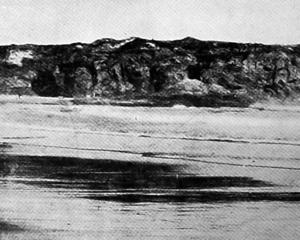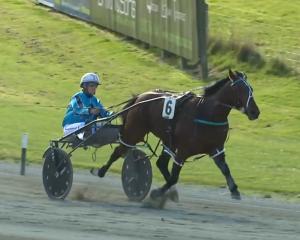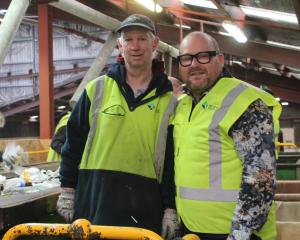
Rubbish dump shops are Dean Raybould’s favourite places.
Home to the detritus of life that someone has judged no long necessary, they are a treasure trove for Raybould, who loves nothing better than searching for a hidden gem that might provide the perfect canvas.
"Anything I can wreck, I’ll wreck."
Bed heads, beaten-up musical instruments, piano tops, trunks, the list goes on.
Anything that looks likely makes its way to his garage studio, waiting for its turn to be transformed into a work of art.
"I kind of like the idea that you’re taking something old and worn and perhaps thrown away and bringing it back to life, you know, instead of taking something new and shiny and white, like a canvas, and then turning it into a picture."
Raybould, who is now based in Oamaru after moving from Golden Bay, has previously worked on canvas but got a little bored with it, so these days only works on large loose canvases 3m x 2m or recycled material.
"I veered away from using sort of traditional canvases and square things, because it just bored me. So I started doing cutouts, which I kind of almost thought of as characters, and the wall is the whole background instead of the painting being the background."
Then he moved to painting on wood, which led to "anything that came to hand".
"I like using recycled stuff. There’s nothing better than an old remade bed head, or I’ve painted on things like double basses and cellos and all sorts of stuff."
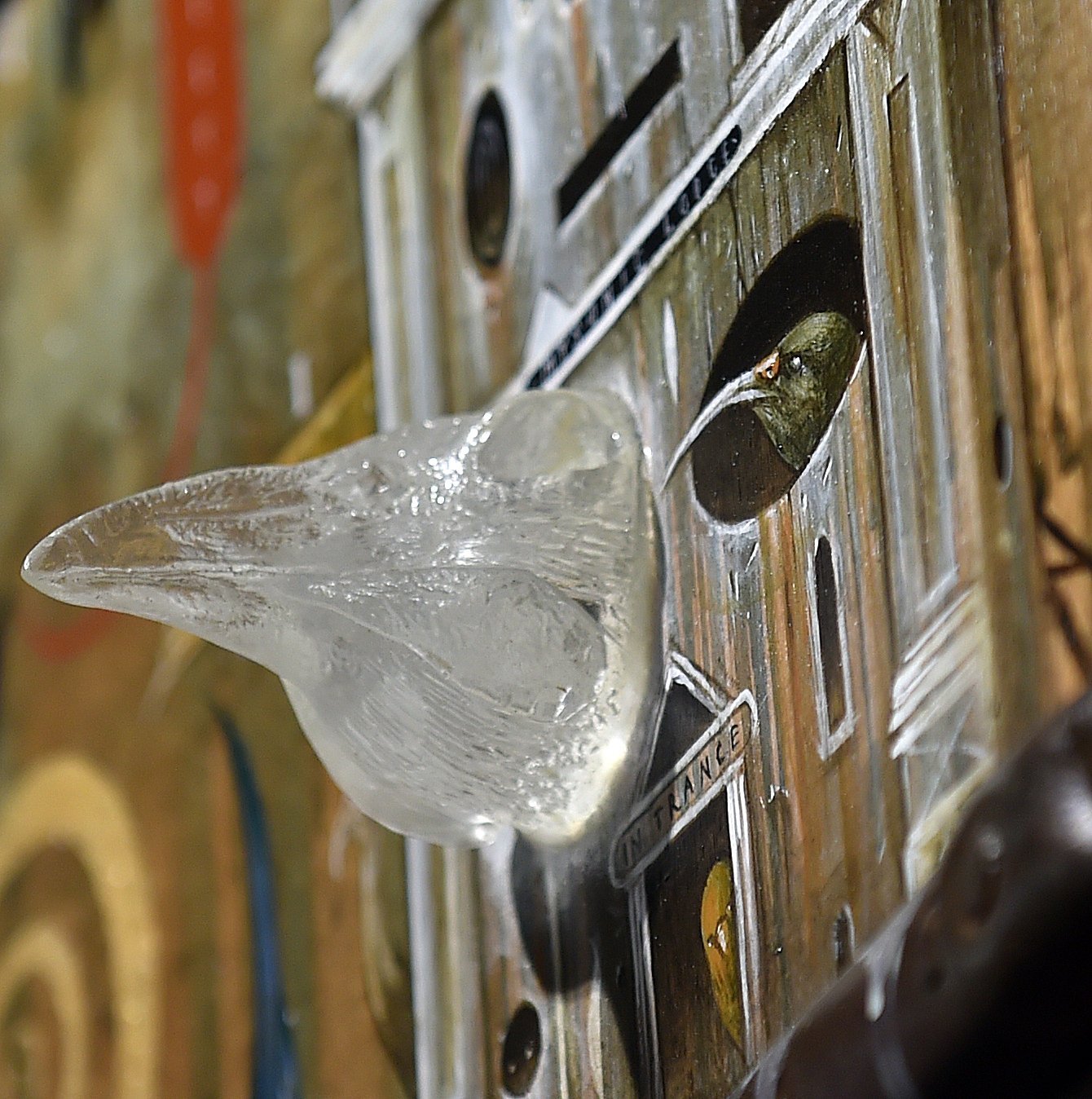
He also won the Edinburgh Art Awards in 2021 with another work, A Whare Too Far Away.
Cleveland judges Jim and Marcella Geddes, from the Eastern Southland Gallery, described his work as "very skillfully painted with text and imagery, both cleverly utilised to highlight the messages of conservation, loss of indigenous species, the Treaty of Waitangi and, in short, [New Zealand’s] early history".
"Clever plays on words add further to the work’s mystery".
But what Raybould really enjoys most is working on old musical instruments.
"They’ve got their own character in it, and it takes away a lot of the heavy lifting. I don’t have to do so much work because, you know, it’s already halfway done. The guitars are really cool."
He is on the look-out for another cheap double bass as he finds they are nice to paint on and he is able to split them down the middle to create two surfaces to work on.
"I really like finding a good musical instrument. I get given quite a lot of acoustic guitars that are a bit damaged but it’s harder finding the really nice stuff."
Self-taught, Raybould considers himself to be more illustrator than painter.
Living in Australia when he left school, he worked part-time as a graphic artist drawing pictures for advertisements and other commercial art.
He started tinkering with painting in his mid-20s, on and off when he could fit it around his work.
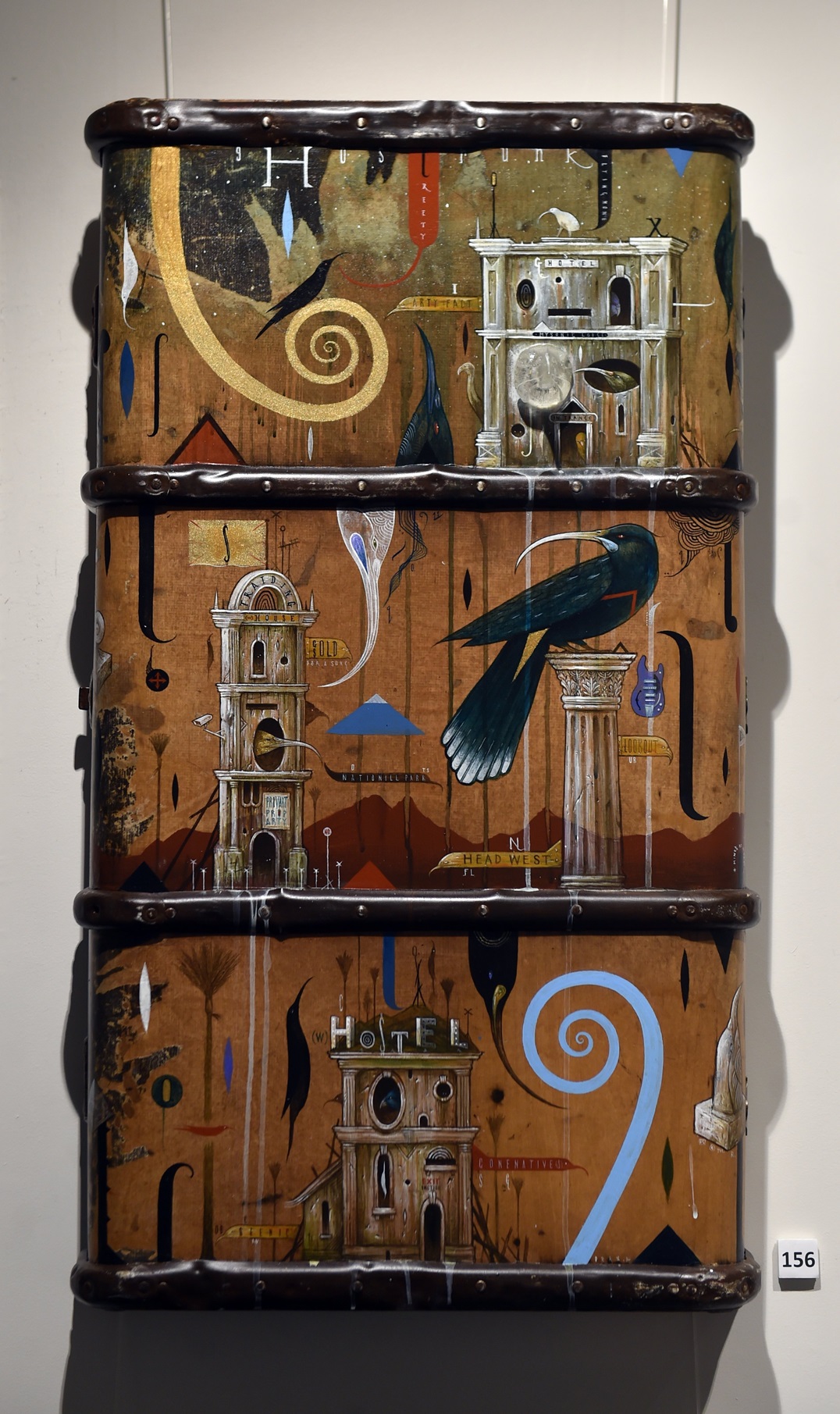
Raybould did a lot of his own research, spending time in libraries reading art books and just looking at works.
"Because I was always working, I’d never really got a chance to go to art college or anything like that."
These days he is a motorbike postman, which he describes as "awesome fun", but over the years he has been head projectionist for an independent cinema and a graphic artist or illustrator for newspapers.
"So I’ve hardly ever been a full-time artist."
Yet that has not stopped him from developing his own style of painting. After years as a graphic artist and having to do rough proofs, he does not like to do that with his own work.
"I’ve got the stage now where I’m confident that I can just grab something to paint on and just go for it. I tend to make it up as I go along, and because I’m using a lot of recycled sort of things to paint on, all the instruments and tables and bed heads and trunks and stuff like that, then I kind of like to let them sort of have a part in it as well."
But it is words rather than images that influence his work the most. Phrases and words pepper some of his works, much of them linked to the environment and conservation.
"I’m often thinking of phrases and messing with words, and then the pictures kind of end up portraying that idea."
His palette, which he describes as quite "muted", has always been limited to blues and browns. He works in acrylics because they are fast and he is able to "mess" with them.
"But I seem to be going back to quite some primary colours too."
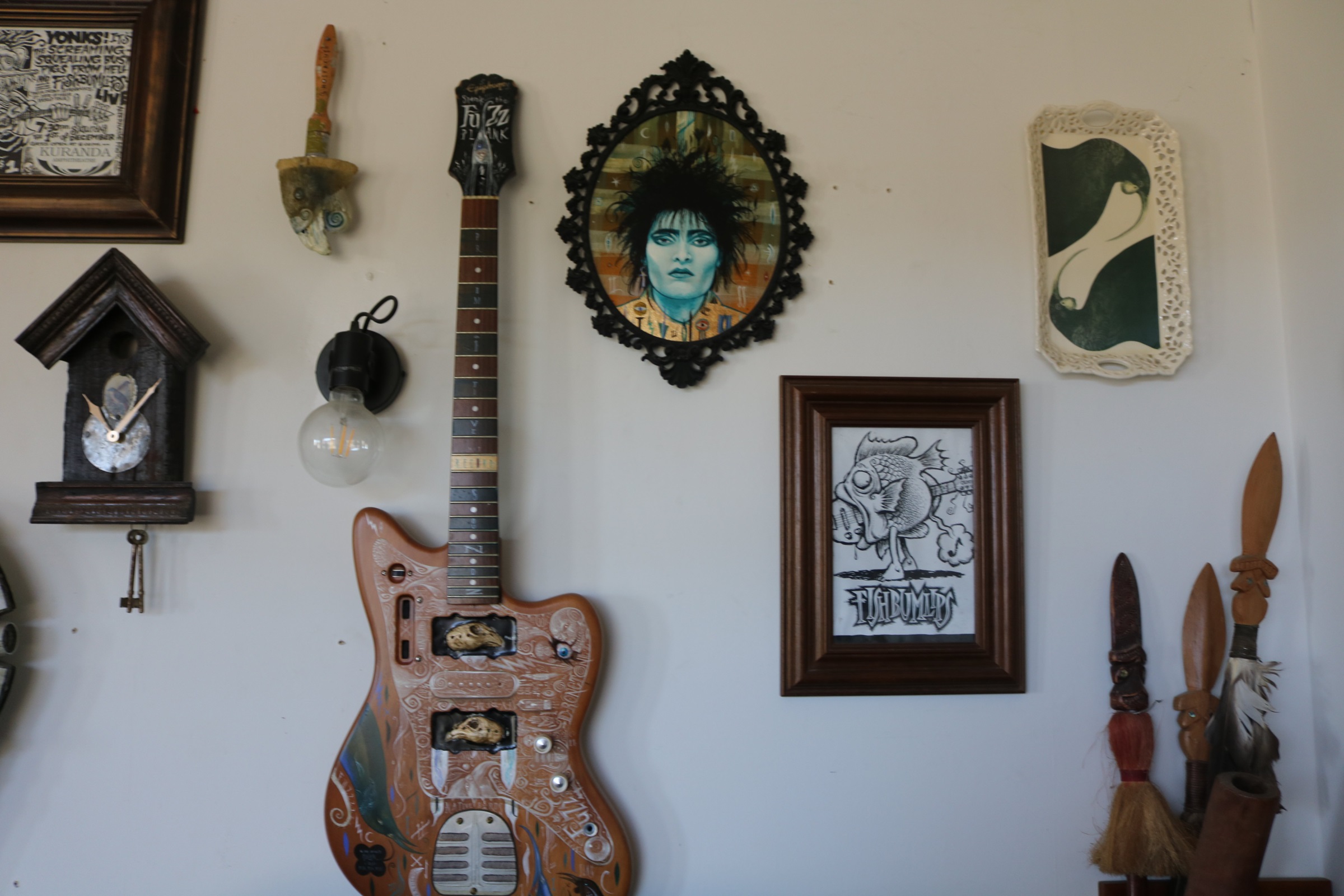
Birds often feature in his works — a huia features in his Cleveland work, as he sees them as the ideal symbol to represent the destruction of species happening in New Zealand.
The works have been likened to the late Bill Hammond’s work, which had a similar environmental focus and featured birds.
"I was kind of into birds before I moved back to New Zealand, because I was born here, but we spent a lot of my life in Australia, and the birds over there are a lot more spectacular."
Living in the tropics, the parrots were "spectacular" and he used to design T-shirts for tourists which featured native birds and reef fish.
"I pretty rarely do ones which are completely recognisable any more, as a native one, you know. Sometimes they’re like bits and pieces of them put together."
After learning to cast sculptural maquette when living in Nelson, he began to include them in his work.
His resin birds’ heads are often used to hang his large canvas works or are attached to his recycled works.
"I think I wanted to add something more 3-D to stuff. Instead of square things, do things with different shapes, and instead of flat things, do things with surface, you know? I think it’s just pushing it a bit more."
There is also a lot of music in his works, which links back to the bird song early colonisers would have heard when they first came to New Zealand, as well as his love of 1980s punk rock and underground music.
"I think a lot of people resonate with that idea. And it’s a shame we can’t hear that any more. So, in a way, it’s about lots of species and people, you know, because we are losing out as well."
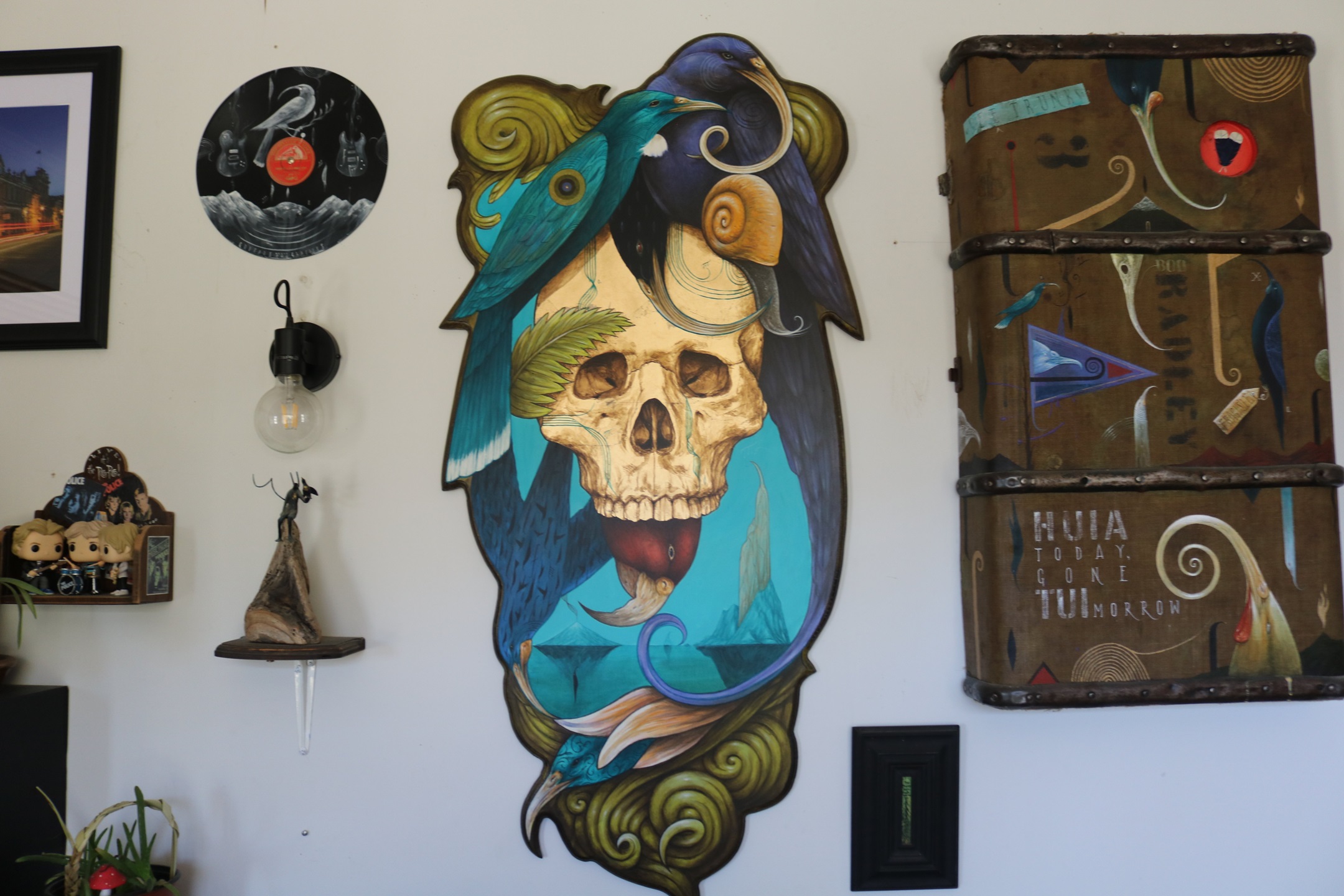
"I can’t really work, paint, without music going. That’s just wrong. So I’m not a quiet, contemplative kind of [painter], more of a loud distorted guitar painter."
Luckily his studio is in the downstairs garage, which is also packed with his finds from dump shops and donated goods.
"It’s nothing flash but it does the trick."
Now that he has a six-day-a-week job, painting has taken a back seat a little, but he sees it as just the "ebb and flow" of life.
"I’ve never really worried about it that much. I think most artists I know, anyway, they go through periods where they don’t do anything. And then they come back to it. You kind of need to build up a mental stock of what you’re going to do next."
What he has managed to do is begin work on a body of work that feels similar, which is unusual for him.
But having a full-time job gives him the security to spend more time on works.
"I don’t really feel the need to show at the moment. I kind of feel like I’d rather just build up a stock of stuff that all kind of fits together for a change because I don’t do that very often."
To see
Cleveland National Art Awards, Otago Art Society, Dunedin Railway Station, until April 26.


